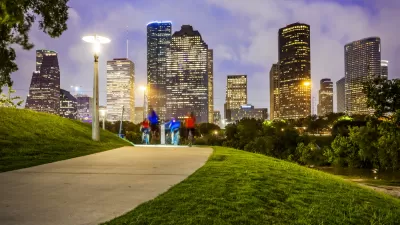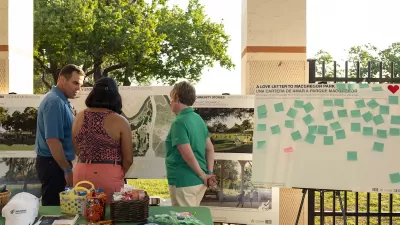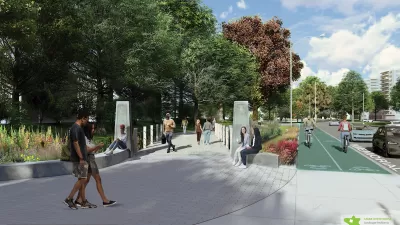New research finds that different types of parks correlate with different gentrification effects, adding to the complexity of urban change.

Richard Florida shares news of a new study by Alessandro Rigolon of the University of Utah and Jeremy Németh of the University of Colorado, which examines the nuances of gentrification in relation to parks and open space in urban areas.
The study is notable because it characterizes different kinds of parks to reveal nuances in gentrification effect. The study distinguished parks based on "size, overall quality, whether they are new, proximity to downtown, and whether or not they are linear “greenway parks,” longer than a mile, that include an active transportation component like bike lanes," explains Florida.
The findings support the claim that not all kinds of parks have the same kind of effect. Long linear parks, like the Beltline in Atlanta, cause the most significant effect.
"According to the study, being located within a half-mile of a new greenway park increases the odds that a neighborhood will gentrify by more than 200 percent (their actual estimates range from 222 to 236 percent). Five of seven new greenway parks in the study spurred significant gentrification in their surrounding neighborhoods, including New York’s High Line, Chicago’s 606 trail, and Houston’s Buffalo Bayou Park."
Parks located close to downtown also correlate to more gentrification, but several kinds of parks didn't show the same effect. The size of the park, for instance, does not correlate to gentrification effects.
The article includes more detail on the findings, the methodology of the study, and speculation about why some parks are more likely to be found near gentrifying neighborhoods are included in the source article.
FULL STORY: Why Greenway Parks Cause Greater Gentrification

Trump Administration Could Effectively End Housing Voucher Program
Federal officials are eyeing major cuts to the Section 8 program that helps millions of low-income households pay rent.

Planetizen Federal Action Tracker
A weekly monitor of how Trump’s orders and actions are impacting planners and planning in America.

Ken Jennings Launches Transit Web Series
The Jeopardy champ wants you to ride public transit.

Washington Legislature Passes Rent Increase Cap
A bill that caps rent increases at 7 percent plus inflation is headed to the governor’s desk.

From Planning to Action: How LA County Is Rethinking Climate Resilience
Chief Sustainability Officer Rita Kampalath outlines the County’s shift from planning to implementation in its climate resilience efforts, emphasizing cross-departmental coordination, updated recovery strategies, and the need for flexible funding.

New Mexico Aging Department Commits to Helping Seniors Age ‘In Place’ and ‘Autonomously’ in New Draft Plan
As New Mexico’s population of seniors continues to grow, the state’s aging department is proposing expanded initiatives to help seniors maintain their autonomy while also supporting family caregivers.
Urban Design for Planners 1: Software Tools
This six-course series explores essential urban design concepts using open source software and equips planners with the tools they need to participate fully in the urban design process.
Planning for Universal Design
Learn the tools for implementing Universal Design in planning regulations.
Heyer Gruel & Associates PA
Ada County Highway District
Institute for Housing and Urban Development Studies (IHS)
City of Grandview
Harvard GSD Executive Education
Toledo-Lucas County Plan Commissions
Salt Lake City
NYU Wagner Graduate School of Public Service





























